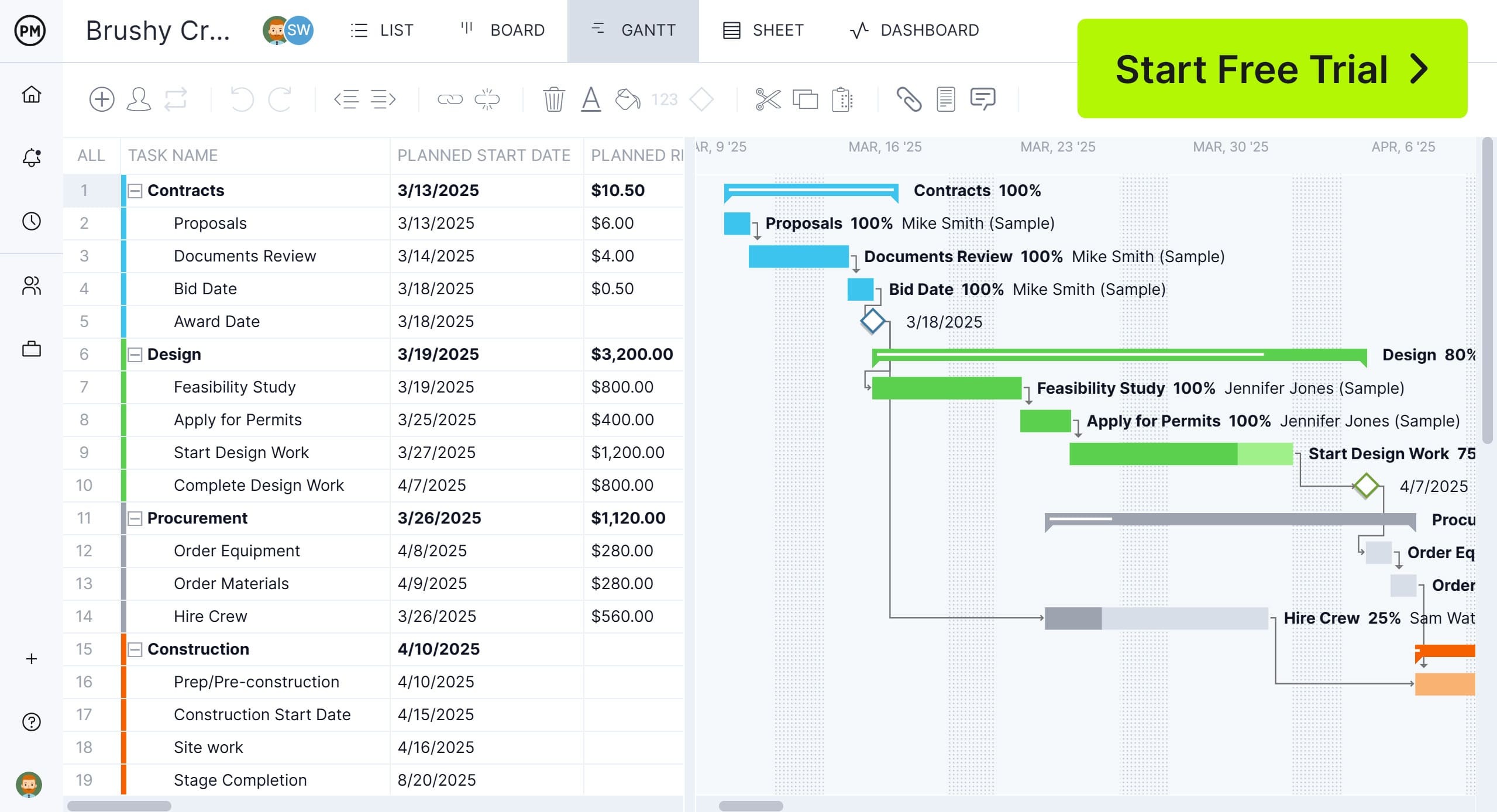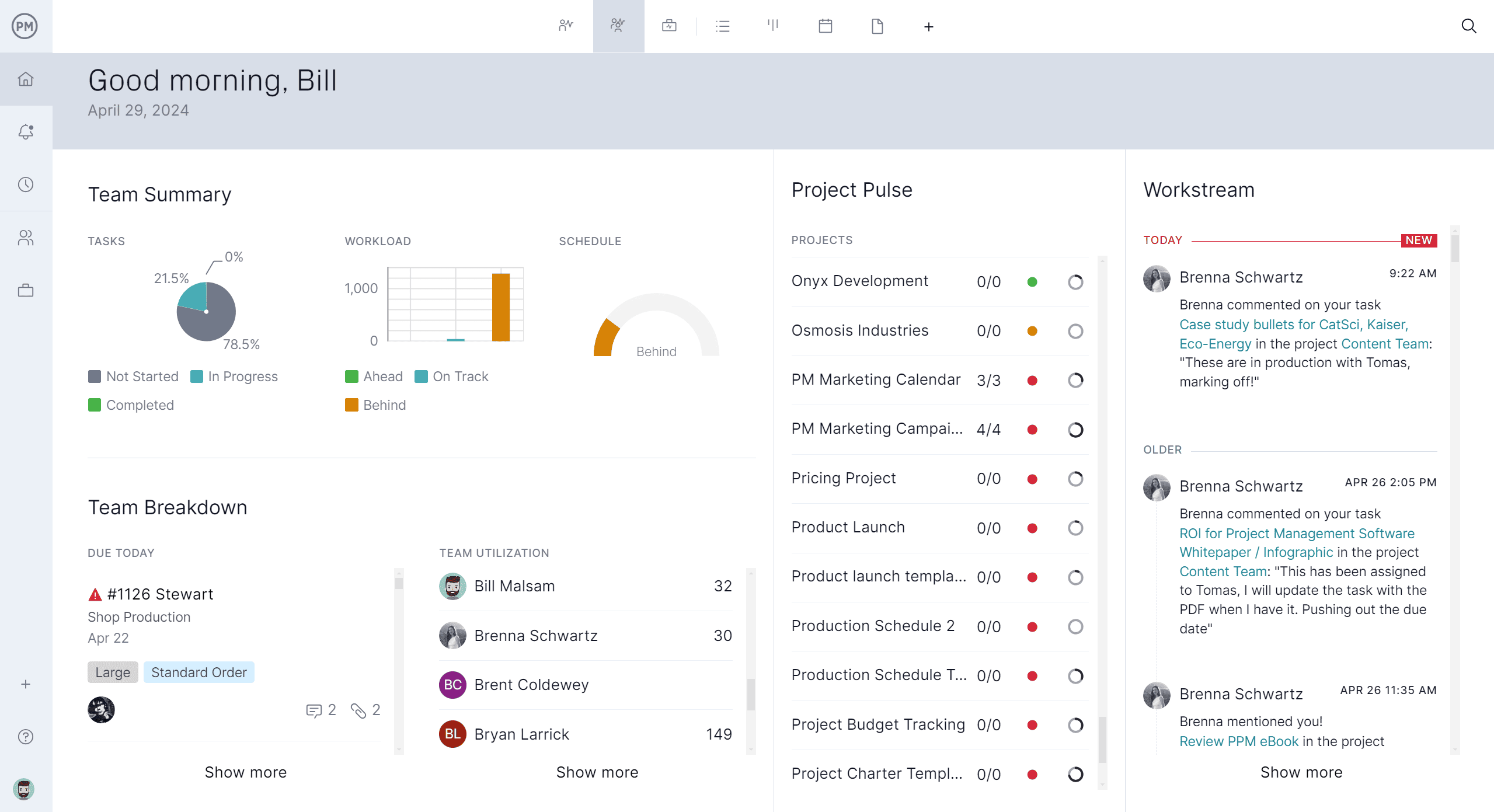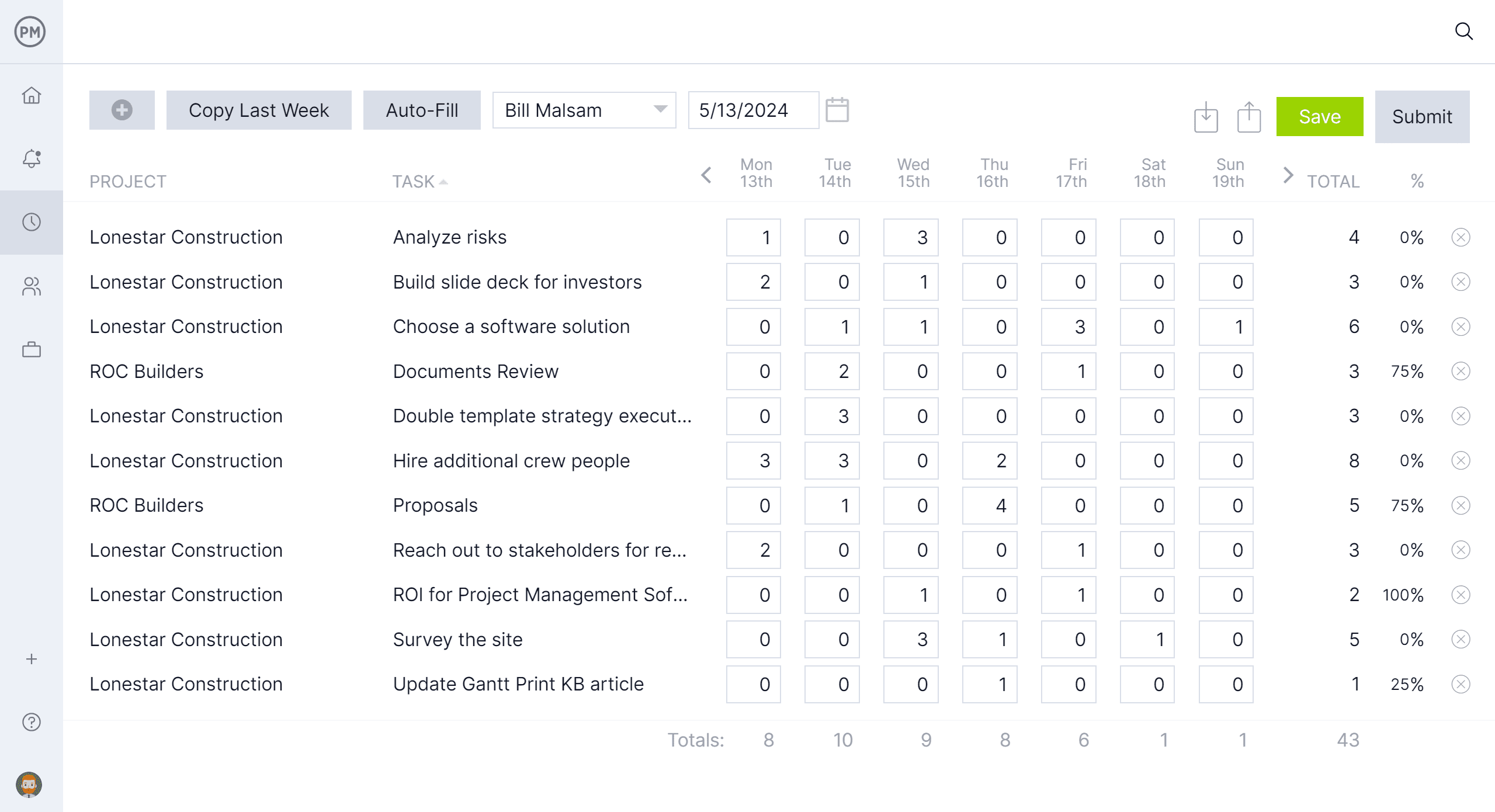Benefits management plays a critical role in ensuring projects deliver value that aligns with organizational goals. It helps teams focus not just on completing tasks but on achieving measurable outcomes that drive long-term success. When applied effectively, benefits management connects project activities to broader strategic objectives, ensuring resources are used efficiently and stakeholders see tangible results.
In project management, benefits management provides a structured way to plan, track and realize the advantages a project is expected to deliver. It bridges the gap between project execution and business value by setting clear targets, monitoring progress and ensuring the intended benefits are sustained after project completion. By integrating benefits management into every stage of the process, organizations improve performance, accountability and return on investment.
What Is Benefits Management?
Benefits management is the discipline of planning and steering projects so promised outcomes turn into measurable value for the business. It links project work to goals that matter, making sure every milestone and deliverable contributes to results stakeholders can recognize and track.
In practice, benefits management maps expected gains to owners, timelines and performance measures. It defines how value will be realized, establishes checkpoints to validate progress and sets the path to sustain outcomes after delivery.
Project management software strengthens benefits management by centralizing plans, tasks and metrics in one place. Teams can align benefits with schedules, track dependencies, monitor baselines against actuals and produce evidence for sponsors through real-time dashboards and reports.
ProjectManager is the best fit for benefits management because it turns strategy into execution with a robust Gantt chart that links benefits to tasks, dependencies and milestones. You can visualize the critical path, balance workloads, capture costs, automate updates and surface insights through live dashboards and customizable reports, so planned benefits move from intent to impact. Get started with ProjectManager today for free.

What Is the Importance of Benefits Management in Project Management?
Benefits management keeps projects focused on value from kickoff to close. It connects plans with outcomes stakeholders care about and guides decisions when tradeoffs appear. By tying work to measurable advantages, teams protect scope, control costs and build confidence that the project will deliver meaningful results.
What Is the Importance of Benefits Management in Project Management?
Benefits management ensures that projects deliver meaningful outcomes rather than simply completing tasks. It provides a structured approach to connect project activities with organizational goals, helping teams track value, measure performance and sustain results over time. By embedding benefits management into the process, organizations improve alignment, accountability and return on investment.
- Strategic Alignment: Benefits management aligns initiatives with business goals so teams pursue outcomes that matter. It translates strategy into prioritized milestones, defines ownership for each benefit and clarifies how success will be evidenced. This shared line of sight reduces pet projects, prevents drift and helps leaders compare options when constraints arise. With alignment visible in schedules and dashboards, teams can sequence work, resolve conflicts and adapt plans while staying true to the organization’s direction.
- Accountability: Benefits management assigns clear owners, timelines and metrics to every promised outcome, creating transparency across sponsors, managers and contributors. Roles are documented, handoffs are explicit and checkpoints verify progress against expectations. When issues arise, agreed triggers prompt corrective action, not debate. This clarity helps teams escalate decisions quickly and keeps attention on value delivery. Post-implementation reviews capture lessons and sustain gains so accountability persists beyond go-live and into steady operations.
- Return on Investment (ROI) Measurement: Benefits management defines baselines, targets and methods for quantifying value before work begins. It links financial and nonfinancial indicators to the plan, then tracks variances as tasks are completed. Forecasts update with data so leaders see ROI trends early and can adjust scope or resources to protect returns. After delivery, benefits realization plans confirm outcomes, attribute impact and document evidence, turning results into usable intelligence for future investments and portfolio decisions.
Related: 13 Free Stakeholder Management Templates for Excel & Word
What Is a Benefits Management Plan?
A benefits management plan is a framework that outlines how a project’s intended value will be defined, tracked and achieved throughout its lifecycle. It identifies expected benefits, assigns ownership, sets timelines and specifies how success will be measured. The plan acts as a bridge between project deliverables and organizational goals, ensuring that value realization is built into every stage—from initiation to post-project evaluation.
What Should Be Included in a Benefits Management Plan?
A benefits management plan provides the structure for defining, measuring and realizing project value. It ensures every benefit is tracked with clear ownership and timelines while aligning with organizational goals. Below are the key components to include in a benefits management plan.
- Purpose and Objectives: Explain why the plan exists and outline its goals. This section sets the context, clarifies expectations and links project outcomes to business strategy, ensuring all stakeholders share a common vision of success.
- Benefits Identification: List all intended benefits, both financial and nonfinancial. Describe how each benefit supports organizational objectives and categorize them by priority, ensuring value is tracked and realized throughout the project lifecycle.
- Benefits Profile: Provide detailed descriptions of each benefit, including its expected value, measurement criteria and anticipated timeframe. This helps stakeholders understand what success looks like and how it will be validated post-delivery.
- Benefits Realization Timeline: Map when benefits are expected to be delivered using milestones or a Gantt chart. This ensures benefits are planned alongside deliverables, giving teams visibility into when value will be measured and reported.
- Roles and Responsibilities: Define who owns each benefit, who is responsible for tracking progress and who will validate results. Assigning accountability ensures benefits remain a priority throughout execution and after project closure.
- Key Performance Indicators and Measurement Methods: Identify the metrics that will be used to track progress and confirm value. These KPIs must be measurable, realistic and tied to business goals, providing data-driven insights for decision-making.
- Change Management Approach: Outline how changes to benefits, timelines or metrics will be managed. This ensures flexibility without losing focus on the original value proposition and helps teams respond to evolving needs.
- Risks and Assumptions: Document any uncertainties that could affect the realization of benefits, along with underlying assumptions. Including these factors helps teams plan mitigation strategies and maintain confidence in projected outcomes.
Benefits Management Process
The benefits management process ensures that projects deliver measurable value at every stage, from initial planning to post-delivery evaluation. Each phase plays a vital role in defining, realizing and sustaining benefits, helping organizations maximize return on investment and align project outcomes with strategic objectives.
Benefits Analysis
Benefits analysis focuses on identifying and validating the potential value a project can deliver. This stage involves engaging stakeholders to determine their expectations, aligning benefits with organizational goals and prioritizing the most impactful outcomes. Detailed analysis helps ensure benefits are realistic, measurable and clearly tied to business strategy, reducing the risk of wasted resources. It also sets the foundation for creating performance metrics and establishing accountability, ensuring value delivery remains the central focus throughout the project lifecycle.
Benefits Planning
Benefits planning outlines how and when the identified benefits will be delivered. It involves defining timelines, assigning ownership, setting performance indicators and integrating value-focused milestones into the overall project plan. A Gantt chart is often used to map benefit delivery alongside key tasks, ensuring schedules align with strategic objectives.
This stage also addresses potential risks and assumptions, providing contingency strategies to protect anticipated value. Proper planning creates a roadmap for tracking progress and confirms that the project has a clear path to measurable results from start to finish.
Benefits Delivery
Benefits delivery translates plans into action by executing project activities that lead to tangible outcomes. This phase requires close coordination between teams, continuous progress monitoring and quality assurance to ensure deliverables meet the standards necessary to realize benefits.
Regular status updates, task tracking and resource management ensure that outputs remain aligned with the original value proposition. Effective delivery not only provides the tangible results promised in the proposal but also reinforces confidence among stakeholders that the project will meet its intended goals and performance benchmarks.
Benefits Tracking
Benefits tracking monitors progress against predefined metrics to confirm whether the project is moving toward expected outcomes. Real-time dashboards, progress reports and variance analyses are often used to provide visibility into performance and identify gaps that need corrective action.
Tracking also involves updating forecasts as tasks are completed, ensuring estimates remain accurate and achievable. By maintaining a clear line of sight into how benefits evolve, teams can make informed decisions, safeguard return on investment and respond quickly to any challenges that threaten value realization.
Benefits Optimization
Benefits optimization seeks to maximize the value generated by the project by refining processes, reallocating resources or improving deliverables. This stage focuses on seizing opportunities to enhance benefits beyond initial expectations, often using lessons learned during tracking and delivery.
Optimization may include adjusting workflows, increasing stakeholder engagement or introducing additional performance measures to capture hidden value. By continuously improving benefit realization strategies, organizations ensure that projects deliver not only the planned value but also additional gains that support long-term business growth and operational efficiency.
Benefits Evaluation
Benefits evaluation occurs after project completion and measures the extent to which planned outcomes were achieved. This phase involves comparing projected benefits with actual results, documenting variances and analyzing contributing factors. Evaluation provides valuable insights for future projects by identifying what worked well and what could be improved.
It also helps sustain delivered value by ensuring post-project activities, such as maintenance and support, are in place. Ultimately, benefits evaluation confirms that the project met its objectives and contributes meaningfully to organizational goals, completing the benefits management cycle.
Who Participates in the Benefits Management Process?
The benefits management process involves multiple roles, each responsible for ensuring projects deliver measurable value. These participants provide oversight, guidance and analysis to align project activities with strategic objectives and track outcomes effectively.
Project Sponsor
The project sponsor champions the initiative, secures funding and ensures alignment with organizational strategy. They oversee high-level goals, approve key decisions and evaluate whether projected benefits justify the investment. Sponsors play a critical role in maintaining executive support and ensuring expected value is delivered.
Project Manager
The project manager is responsible for planning, executing and monitoring project activities to ensure deliverables align with expected benefits. They coordinate resources, manage schedules and track progress using tools like Gantt charts and dashboards. Project managers also communicate updates to stakeholders and recommend adjustments when necessary to protect anticipated value.
Program Manager
The program manager oversees multiple related projects and ensures their combined benefits contribute to broader business objectives. They track interdependencies, optimize resource allocation and maintain alignment between project-level activities and organizational strategy. By monitoring overall progress, program managers ensure that benefits are realized across the entire program portfolio.
Project Management Office
The project management office (PMO) provides governance, standards and frameworks for benefits management across projects. They ensure consistency in processes, reporting and performance measurement. The PMO also supports project managers by providing tools, methodologies and oversight to align individual projects with enterprise-level value delivery goals.
Business Analyst
The business analyst helps identify, define and document expected benefits, ensuring they are measurable and realistic. They gather stakeholder requirements, analyze business needs and translate them into project objectives. Throughout the lifecycle, the analyst validates that deliverables remain aligned with intended benefits and supports adjustments as conditions change.
How ProjectManager Helps With Project Benefits Management
ProjectManager provides a complete platform to connect project execution with value realization. From initial planning to post-project evaluation, it ensures benefits are clearly defined, tracked and measured in real time. By combining robust scheduling tools, reporting features and collaboration capabilities, ProjectManager gives teams everything they need to deliver measurable outcomes that align with business goals.
Visualize and Track Benefits in Real Time
ProjectManager’s Gantt charts, dashboards and workload views allow teams to map benefits to project tasks, milestones and dependencies. Live data updates progress automatically, so stakeholders can see how planned outcomes evolve and make timely adjustments to stay on track.

Generate Reports and Maintain Accountability
With customizable reports and secure timesheets, ProjectManager makes it easy to monitor KPIs, track ROI and ensure benefits are delivered as promised. These reports provide transparency for sponsors and leadership, keeping everyone focused on achieving measurable results beyond task completion.

ProjectManager is online project and portfolio management software that connects teams, whether they’re in the office or out in the field. They can share files, comment at the task level and stay updated with email and in-app notifications. Join teams at Avis, Nestle and Siemens who are using our software to deliver successful projects. Get started with ProjectManager today for free.


